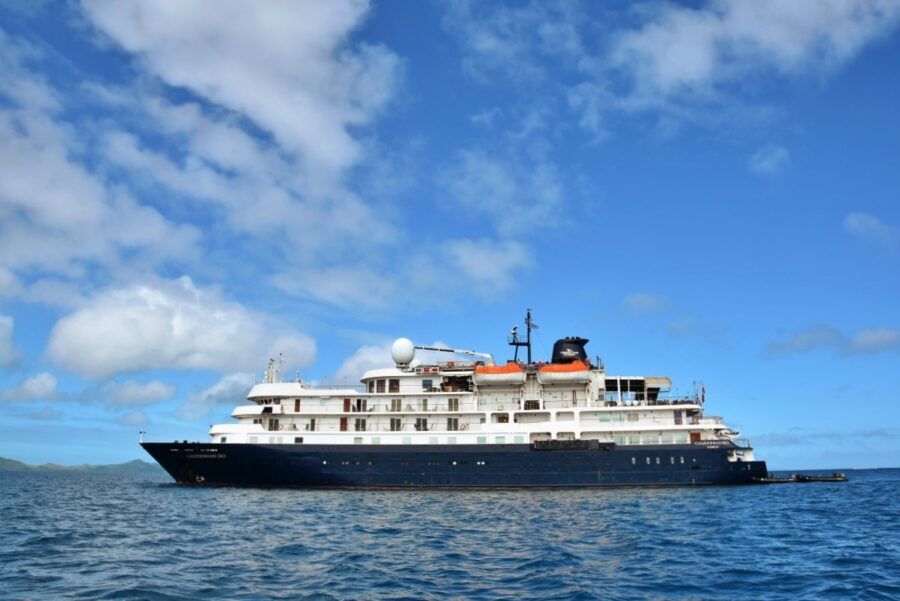Budgeting Tips for a Cruise to Fiji
Sailing the tropical waters of the South Pacific, stopping off in the archipelago islands of Fiji to experience the stunning beaches and rich cultures, is the dream… But it’s an expensive dream. That’s right, cruises to Fiji have a few considerable costs associated with them, from the initial cruise rate to shore excursions to dining. We share ways to save money on all those aspects in this guide on getting a good deal on a cruise to Fiji.
Note: This guide refers to international cruises departing from Australia, New Zealand and French Polynesia. For more advice on cruises within Fiji, see The Guide to Cruises Around Fiji.
Table of Contents
1. Book Your Onboard Activities on Port Days
From the spa to rock climbing, there is more choice than ever when it comes to onboard cruise activities. But all those activities add up. As most passengers leave the boat on port days to explore the destination of the day, cruise companies have the habit of heavily discounting their onboard activities on port days. So if you have your mind set on that luxurious spa treatment, book it on a port day and save big bucks. If you time it right, you could even pamper yourself early in the morning and have a whole day to explore your destination, too!
 © FijiPocketGuide.com
© FijiPocketGuide.com
2. Don’t Tip Too Much
Although tipping is always appreciated, most cruise lines have a policy of including gratuity (understand “mandatory tip”) in all their pricing. This means that any tip you give to your waiter or staff will be given on top of the already included tip. We suggest to only tip for exceptional service and spend all those savings on more activities on shore.
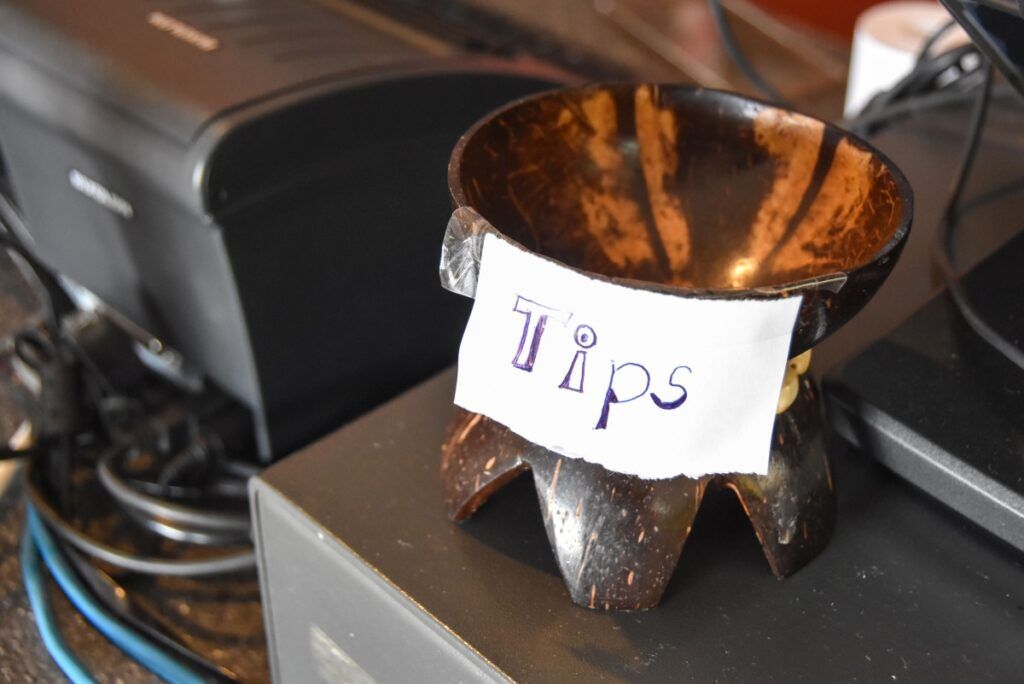 © FijiPocketGuide.com
© FijiPocketGuide.com
3. Don’t Book Shore Excursions on the Boat
Speaking of shore activities, cruise companies are notorious for over-pricing shore activities, often marking up the price by up to 300%! For this reason, you are much better off booking your activities on shore. There is so much to choose from in Fiji’s main parts, from stunning island trips to adventurous inland exploration. Check out some of the best tours for cruise ship passengers in the 10 Best Shore Excursions in Fiji. Plus, check out How to Book Tours in Fiji + Get the Best Deals for more tips.
 © FijiPocketGuide.com
© FijiPocketGuide.com
4. Check Out the Free Things to Do in Suva, Denarau, Lautoka and Dravuni Island
At every port of call in Fiji, there are free things to do. Mingling with the locals at the market in Lautoka and Suva, checking out the five-star resorts in Denarau, hiking the hilltops of Dravuni Island, and checking out the hot springs in Savusavu are some of the free attractions of Fiji’s five ports of call. Dive into our listings of free and cheap things to do in the following articles to enjoy a visit to Fiji without breaking the bank:
- 10 Free & Cheap Things to Do in Suva
- 10 Free & Cheap Things to Do in Denarau
- 10 Things to Do in Lautoka
- 10 Things to Do in Savusavu
- 10 Things to Do on Davuni Island
 © FijiPocketGuide.com
© FijiPocketGuide.com
5. Get Fijian Dollars Onshore, Not on the Boat
Exchanging money can be one of the most costly things to do on a cruise ship. Onshore, competition between currency exchange outlets is fierce making for much more advantageous rates for us travellers. Another great idea is to get yourself Fijian dollars in your country of origin before boarding your cruise. Although the rates won’t be as good as in Fiji, you will still save plenty compared to exchanging currency on your ship. See The Best Places to Exchange Money in Fiji to learn more.
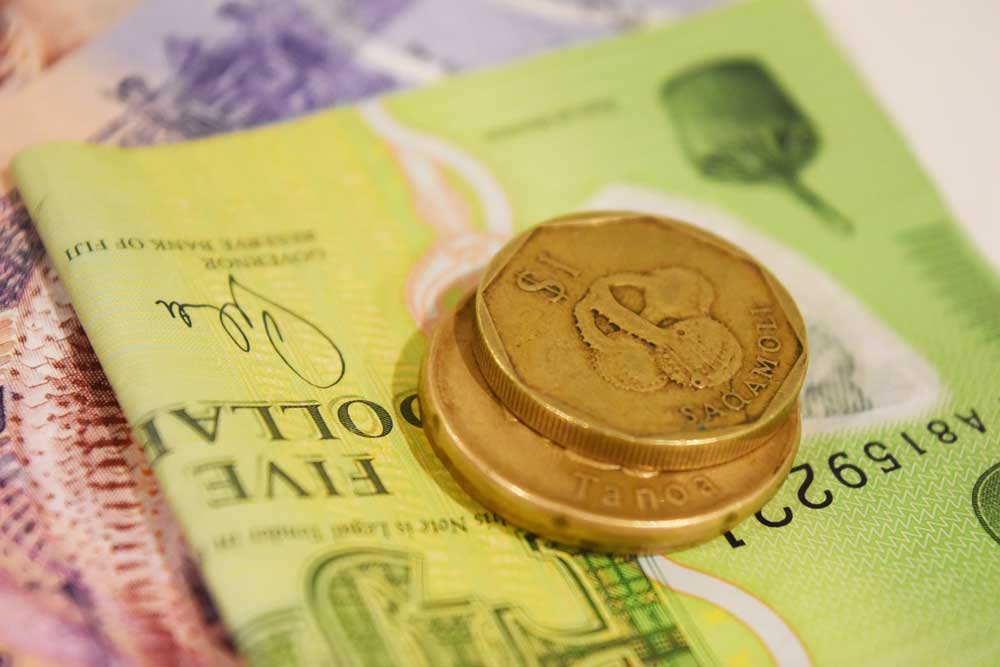 © FijiPocketGuide.com
© FijiPocketGuide.com
6. Wait Until Being at Port to Call Home…
… and use the internet. You will be shocked by the price and speed of the internet provided onboard your cruise ship. Use apps like Pocket to save pages and websites that you would like to refer to during your trip and try to stay away from your phone while on the ship. Internet on the go can be incredibly costly, especially at sea. In Fiji, internet access is actually quite cheap and easy. Refer to this article on How to Get Internet in Fiji for more tips.
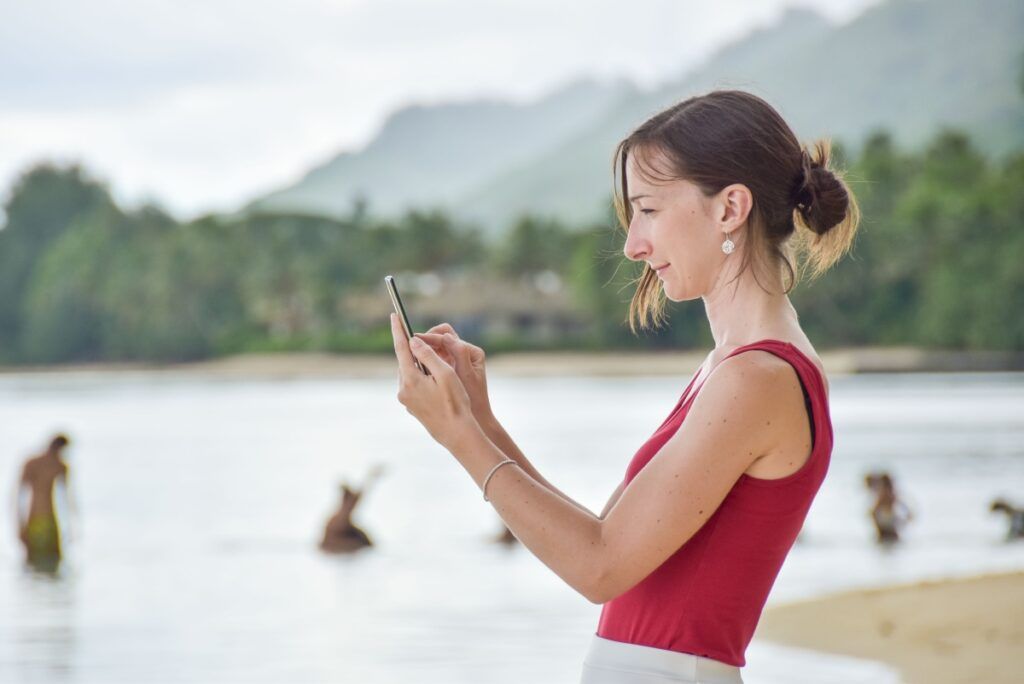 © FijiPocketGuide.com
© FijiPocketGuide.com
7. Look into Restaurant and Bar Packages
Everybody’s got to eat, right?! With so many onboard restaurants and food experiences to be had, you will want to treat yourself. Should it be at booking or on your first cruise day, you will have the option to get yourself restaurant and bar packages. These are worth considering if you are a foodie and plan to eat around instead of sticking to the buffet.
 © FijiPocketGuide.com
© FijiPocketGuide.com
8. Hunt for Restaurant and Drink Specials
From the first-day discount to specials every night, the onboard restaurant on your cruise ship will work hard to get your business. The best way to stick to your budget is to eat every meal at the buffet, but let’s be honest, who wants to do that? Hunt for specials, especially at lunch, and save big bucks on food. Plus, did you know that if you do not finish your wine bottle, you can ask to cork it and keep your wine bottle for your next meal? Some cruise ships even allow you to keep your wine bottle in any restaurant onboard.
 © FijiPocketGuide.com
© FijiPocketGuide.com
9. Eat Onshore
Sticking with food, your best bet to save a lot of coconuts on food is to eat onshore when in Fiji. The food is very well-priced and absolutely delicious. It is also your best option to truly take in the local culture and experience the yummiest Fijian treats. Not sure where to start? What about checking out our food guides for each port of call:
- The Food Guide to Suva: Places to Eat & Food Tours
- The Food Guide to Denarau: Places to Eat & Food Tours
- The Food Guide to Lautoka, Rakiraki and the Suncoast
- The Food Guide to Savusavu & Vanua Levu: Places to Eat & Tours
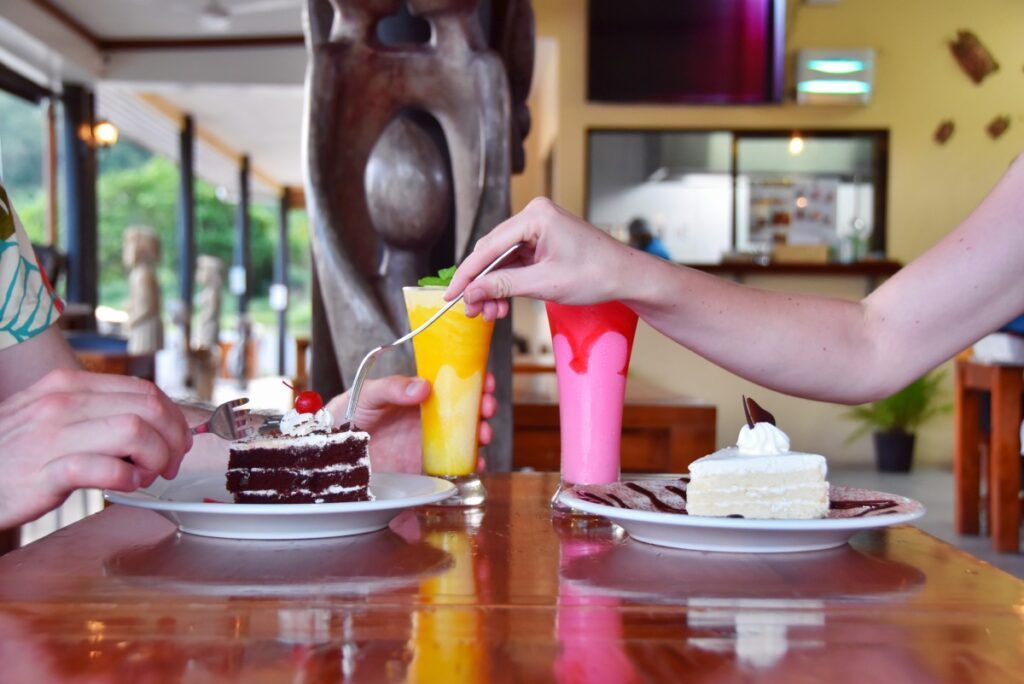 © FijiPocketGuide.com
© FijiPocketGuide.com
10. Bargain for a Deal or Upgrade with Your Travel Agent
One of the most profitable travel products for travel agents to sell is cruises. For this reason, they have a bit more room to play and this is where your bargaining skills will come in useful. Plus, if you bundle your cruise with flights or other accommodations, you are bound to be able to get yourself an upgrade, a discount or some freebies. It is always worth asking!
 © FijiPocketGuide.com
© FijiPocketGuide.com
11. Choose an Interior Room
A surefire way to save money on a cruise is to be flexible with your cruise dates. The best deals can be found in the final weeks leading up to the cruise, where it’s common to see cruise prices drop within the six weeks leading to departure. Of course, there are a few downsides to this, such as your dream cruise and sailing being sold out or being left with the most undesirable rooms. However, this does segway onto our second point, which is…
 © FijiPocketGuide.com
© FijiPocketGuide.com
12. Be Flexible with Your Cruise Dates
The balcony rooms, staterooms and other luxury options are, of course, the most popular choice, but this also comes at a price. If you have the mantra that a room is just a room and it’s more about the places you visit, then you’ll find the interior rooms ideal! Plus, remember that you have access to the rest of a huge cruise ship!
 © FijiPocketGuide.com
© FijiPocketGuide.com
13. Don’t Purchase Onboard Pictures
Yes, photo crews are still roaming ship decks to take pictures – even in the day and age where we all have at least one phone camera in our pocket at all times. Take your own pictures, and make friends with other travellers so they can take pictures for you. You will save tens, if not hundreds, of dollars compared to the expensive photo options available for sale onboard.
 © Pexels
© Pexels
14. Buy Souvenirs Onshore
It seems to be the theme of the article, but once more, be aware of onboard prices! Fijian souvenirs on your cruise ship will be much more expensive than if purchased onshore. So take some time to shop for souvenirs in Fiji to save plenty, support the local economy, and get many more choices than you would have in the cruiseline’s gift shop. Check out Where to Buy the Best Souvenirs in Fiji.
 © FijiPocketGuide.com
© FijiPocketGuide.com
More About How to Save Money on Cruises to Fiji
That’s it for our guide to cruises to Fiji; for more information about cruising in Fiji, check out the following articles:
- 12 Best Cruises That Visit Fiji
- How to Choose a Multi-Day Yacht or Cruise Vacation in Fiji
- Cruises Around Fiji: A Full Small-Ship Cruise Comparison
Finally, if there’s anything we’ve missed, you’re likely to find it in The Complete Guide to Cruises in Fiji.
Sources:
The information in this guide has been compiled from our extensive research, travel and experiences across Fiji and the South Pacific, accumulated over more than a decade of numerous visits to each destination. Additional sources for this guide include the following:
- Land Transport Authority (Road safety advice - Updated [2025])
- Tourism Fiji (General travel advice - Updated [2025])
- Fiji Immigration (Visa and immigration advice - Updated [2025])
- Fiji Revenue & Customs Service (Customs and visitor taxes - Updated [2025])
- Biosecurity Authority of Fiji (Biosecurity advice - Updated [2025])
- Fiji Meteorological Service (Weather forecast and warnings - Updated [2025])
- Fiji Bureau of Statistics (Statistics and travel data - Updated [2025])
- Ministry of Tourism and Civil Aviation (Tourism statistics - Updated [2025])
- SPTO (Pacific tourism advice - Updated [2025])
- Fiji Hotel and Tourism Association (Tourism trade association - Updated [2025])
- Safe Travel (New Zealand travel advisory for Fiji - Updated [2025])
- Smart Traveller (Australia travel advisory for Fiji - Updated [2025])
- Travel.State.Gov (U.S. travel advisory for Fiji - Updated [2025])
Our editorial standards: At Fiji Pocket Guide, we uphold strict editorial standards to ensure accurate and quality content.

About The Author
Robin (Ruveni) C.
This article was reviewed and published by Robin, the co-founder of Fiji Pocket Guide. He has lived, worked and travelled across 16 different countries before settling in the South Pacific, so he knows a thing or two about planning the perfect trip in this corner of the world. Robin is also the co-founder of several other South Pacific travel guides and is a regular host of webinars with the South Pacific Tourism Organisation.




![Cruises Around Fiji: A Full Small-Ship Cruise Comparison 🛳️ [2025]](https://fijipocketguide.com/wp-content/uploads/2020/05/Blue-Lagoon-Cruises-Ship-Sawa-i-Lau-CREDIT-FijiPocketGuide.com--900x506.jpg)

